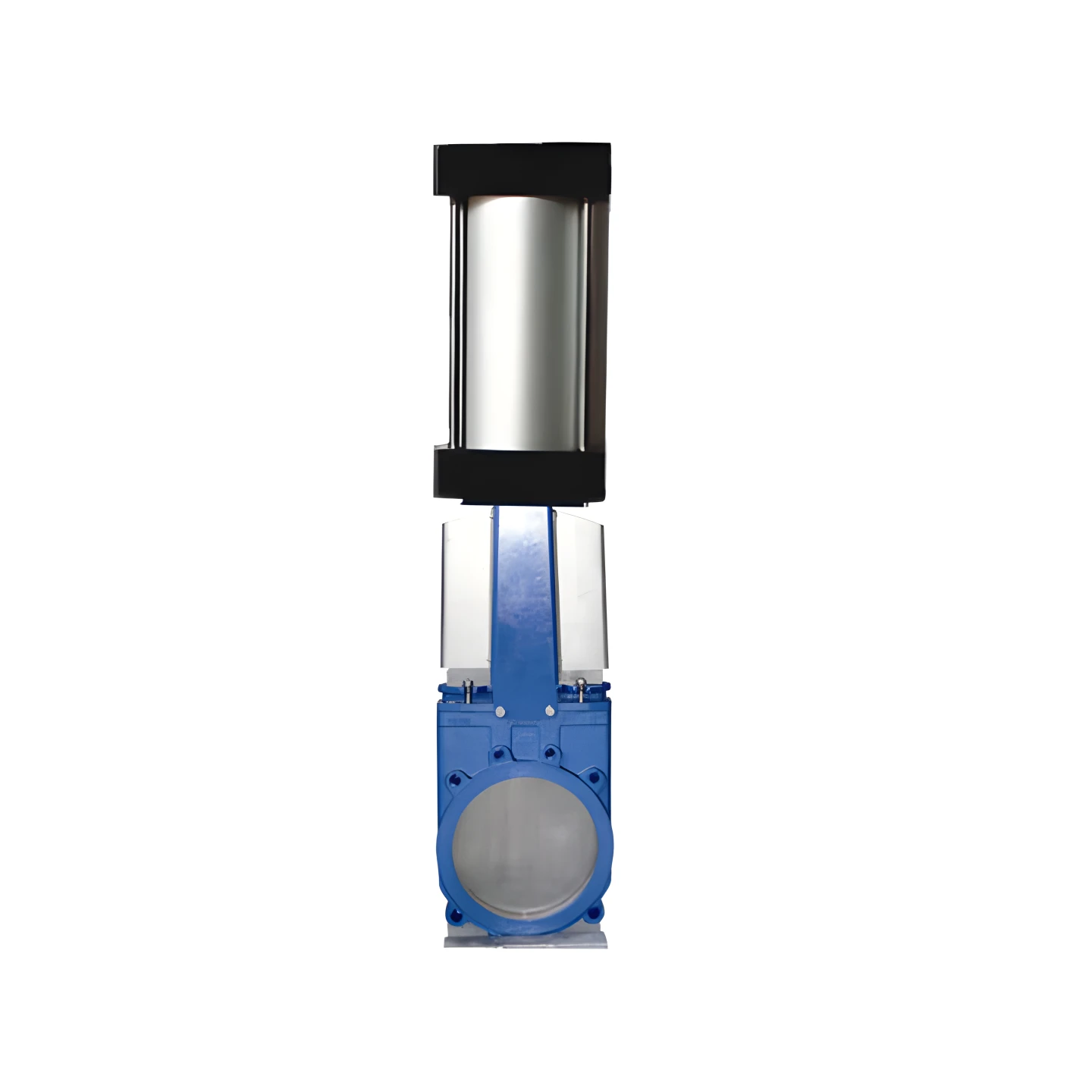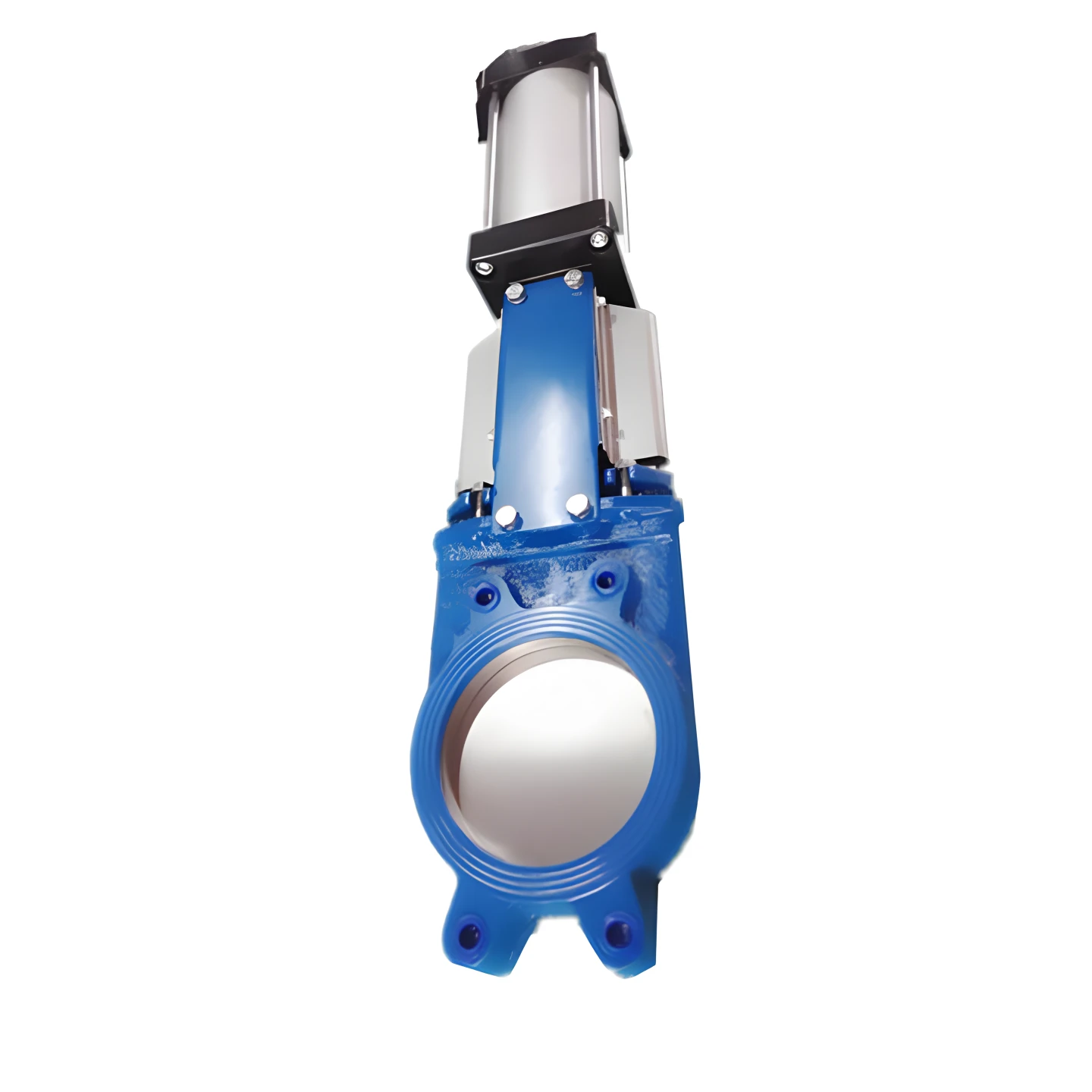| Application | General | Place of Origin | ShenZhen, China |
|---|---|---|---|
| Power | Pneumatic | Customized support | OEM, ODM |
| Warranty | 3 years | Model Number | DN50-DN600 |
| Temperature of Media | Low Temperature, Medium Temperature | Media | Water |
| Product name | Knife Gate Valve | Body | Ductile Iron GGG40/50 |
| Seal | EPDM,NBR,PTFE | Color | Blue RAL5005/ 5010/ 5015/ 5017 |
Product Overview
The air-operated knife gate valve is designed for efficient flow control in gas applications. Its robust construction and air operation enable reliable performance under various conditions.
Features
- Air-operated for automated control
- PN16 pressure rating
- Suitable for gas applications
- Knife gate design for effective sealing
Technical Specifications
| Parameter | Specification |
|---|---|
| Valve Type | Air Operated Knife Gate Valve |
| Body Material | Stainless Steel / Cast Iron |
| Operation | Pneumatic |
| Connection Type | Flanged |
| Flange Standard | ANSI B16.5 / DIN / JIS |
| Pressure Rating | PN16 |
| Temperature Range | -10°C to 120°C (14°F to 248°F) |
| Size Range | DN50 to DN600 |
| Seal Material | EPDM / PTFE |
| Actuator Type | Double-acting pneumatic actuator |
| Leakage Rate | Zero leakage (Metal to Metal) |
Installation Instructions
Preparation: Ensure the pipeline is clean and free from debris. Verify flange compatibility.
Mounting: Align the valve with the pipeline flanges. Use appropriate gaskets and bolts to secure the valve. Tighten bolts in a criss-cross pattern for even pressure.
Pneumatic Connection: Connect the pneumatic actuator to the air supply. Ensure proper pressure settings as per specifications.
Inspection: Verify smooth operation by manually testing the actuator. Ensure there are no obstructions.
Operation Guidelines
- Opening/Closing: Use the control system to operate the pneumatic actuator for opening and closing the valve.
- Flow Control: Adjust the air pressure to regulate the valve position for precise flow control.
Maintenance
- Regular Inspection: Check for signs of wear or damage. Ensure the actuator and valve components are in good condition.
- Seal Replacement: Inspect seals periodically and replace if necessary to maintain zero leakage.
- Cleaning: Keep the valve and actuator clean and free from external contaminants.
Safety Precautions
- Always depressurize the system before performing maintenance.
- Use appropriate personal protective equipment (PPE) during installation and maintenance.
- Ensure all personnel are trained in valve operation and safety protocols.
Troubleshooting
| Issue | Possible Cause | Solution |
|---|---|---|
| Valve does not open/close | Pneumatic issue or obstruction | Check air supply and clear obstruction |
| Leakage | Worn or damaged seal | Replace the seal |
| Actuator malfunction | Air supply fault | Inspect connections and pressure levels |
Product Show















